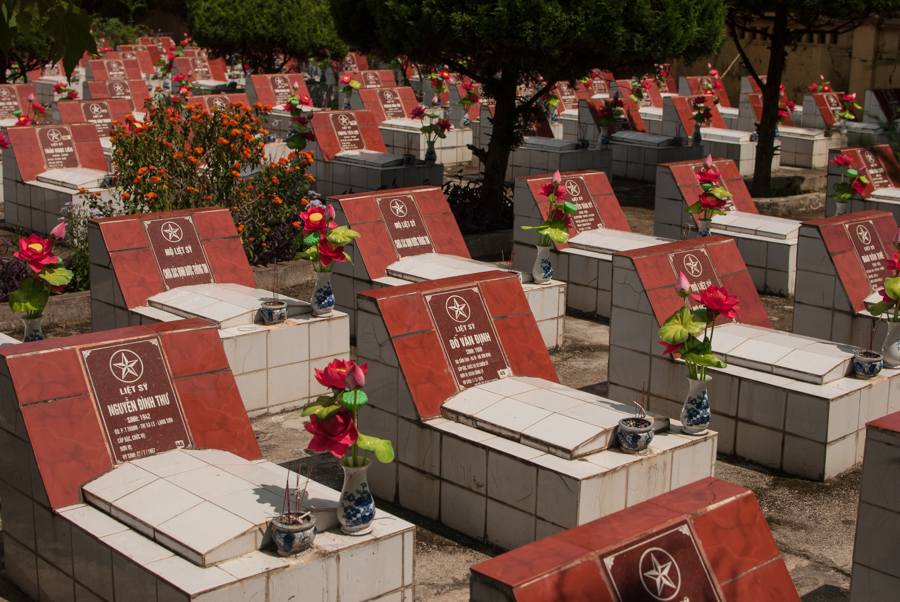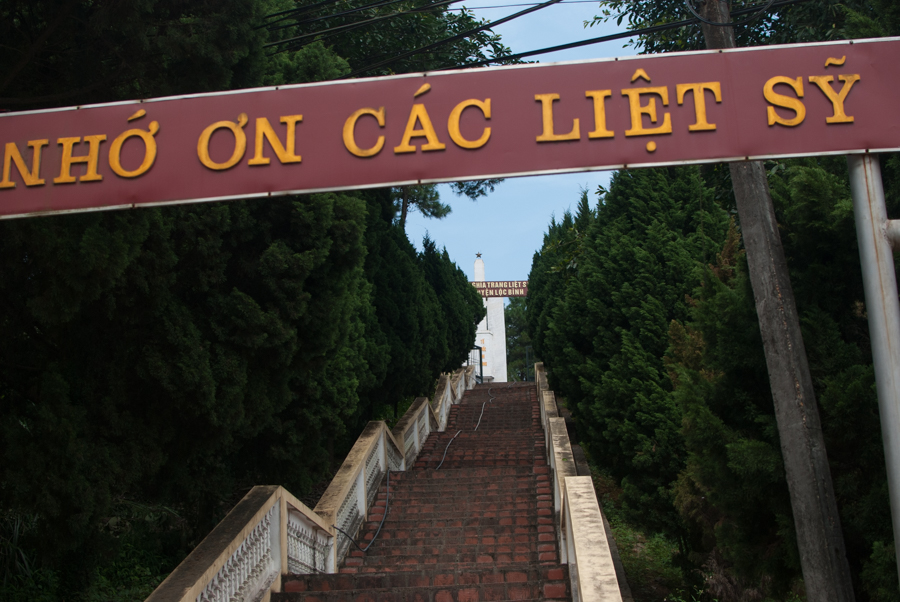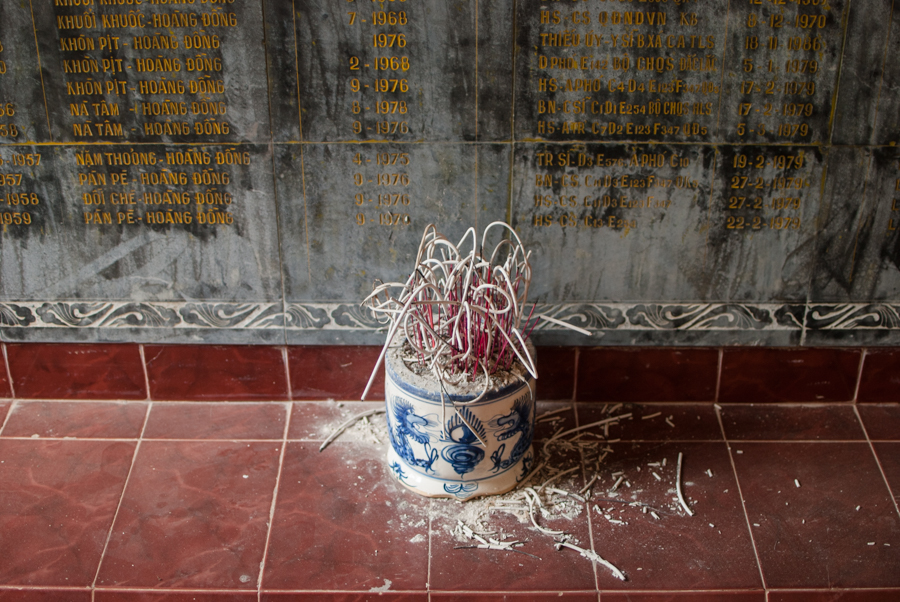Four decades on, China’s 1979 border war is officially ‘forgotten’ in Hanoi.
Shortly before dawn on Feb. 17, 1979, as the morning mist clung to the jagged rocks of the Sino-Vietnamese frontier, more than 400,000 soldiers of the Chinese People’s Liberation Army swept into northern Vietnam.
At the time, Ly Thi Kham was a 25-year-old private in the People’s Army of Vietnam, which was dug in along the frontier. In a recent conversation at his home in the border town of Dong Dang, the gravel-voiced veteran recalled the serried ranks of PLA soldiers advancing through the dim light, drums pounding and horns blaring.
“They were spread out in rows, and they attacked all together,” he said, sitting below a faded portrait of himself in his military uniform. “There was smoke everywhere and the sky was all bright with cannons.”
Intended to teach Vietnam a “lesson” for its January 1979 overthrow of Cambodia’s Khmer Rouge regime, then a close ally of Beijing, the Chinese invasion led to four weeks of bitter struggle. On March 16 the Chinese troops withdrew, leaving much of the border in ruins. This forgotten sequel to the Vietnam War claimed the lives of tens of thousands of soldiers on both sides, along with untold numbers of civilians.
On the Vietnamese side, most of the fallen soldiers came to rest in military cemeteries scattered throughout the northern hills. In September, I visited one such graveyard on a hillside 20 km south of the town of Lang Son. The graves were laid out around a white monument topped with a five-pointed star. Each bore the inscription liet si (martyr) above the name of the fallen, and was decorated with a vase of cheery plastic lotus flowers. Many bore dates from February and March 1979.
Lang Son, which saw some of the most intense fighting, has grown into a pleasant town of tree-lined streets and crowded roadside eateries. Markets overflow with Chinese goods shipped through the ironically named Friendship Pass border gate 12 km to the north. Across major roads, decorations are strung: flowers, swooping doves, symbols of peace.
Yet memories of the conflict remain raw. Local views of the Chinese are sprinkled liberally with the Vietnamese word tham, meaning “greedy” or “avaricious.” For Nguyen Thi Li, an 82-year-old Lang Son resident who was evacuated during the conflict, China would “always have the intention to expand their land. Because they’re a big country, they’ll always want to be bigger.”
Today, Vietnam’s government rarely talks about the border war. After Hanoi and Beijing normalized relations in 1991, ties between the two communist parties improved, their economies became intertwined, and the conflict was scrubbed from official commemorations. In contrast to Vietnam’s wars against the French and Americans, the recent conflict with China poses an awkward challenge for the Communist Party of Vietnam, which is keen to maintain good ties with Beijing. But many ordinary people hear echoes of the war in China’s current policies, especially its aggressive territorial claims in the South China Sea.
Anti-Chinese demonstrations have become a common occurrence in Vietnam over the past decade. They are directed equally against the Vietnamese authorities, which protesters accuse of cozying up to Beijing. To a visitor, the resentment is palpable. “They kowtow: It’s something like the slave and the boss,” said Anh Chi, a political dissident who has participated in numerous anti-China protests.
The roots of popular hostility toward China run deep and wide. No other nation in Southeast Asia has been so exposed to the expansionary tendencies of its northern neighbor. For nearly a millennium to 938, China ruled northern Vietnam as an imperial province. Subsequently, Vietnamese kings fought off repeated invasions from the north, and resistance to outside domination — mostly Chinese — lies at the core of Vietnamese national identity.
One irony is that Vietnam has also benefited from its proximity to China. As the historian Keith Weller Taylor has written, Chinese contributions to Vietnam cover “all aspects of culture, society, and government, from chopsticks wielded by peasants to writing brushes wielded by scholars and officials.” Indeed, most historians agree that Chinese borrowings gave Vietnamese kingdoms the strength and cohesion necessary to avoid reabsorption by the Chinese empire.
These contradictions converge in the question of whether and how the 1979 war should be remembered. At the Museum of Military History in Hanoi, a repository of faded wartime photos and other revolutionary relics, the displays list 13 “Vietnamese Resistance Wars Against Invaders,” including 11 against armies from China, but are silent on 1979. To its critics, this absence proves the communist party’s capitulation to a hated enemy.
At the same time, Vietnam’s economy remains heavily reliant on trade and investment with China, which, taken together with the historic and ideological ties between the two communist parties, makes good relations imperative. Even as Vietnam has moved to counterbalance Chinese power with increased economic and security ties to the U.S., it has been careful to reassure China. Each step toward Washington has been accompanied by anxious glances in the direction of Beijing.
In normalizing relations with China in 1991, Vietnamese leaders implicitly accepted that their country could not live indefinitely in the shadow of a hostile China. In many ways, this reflects views throughout Southeast Asia, a region fated to sit in disconcerting proximity to the world’s most populous nation.
As a Vietnamese general — a veteran of the 1979 war — told the historian Henry J. Kenny: “We must learn to live with our big neighbor.” As China’s economic and political power rises, that message should resonate widely throughout the region.
Published in the Nikkei Asian Review, March 11-17, 2019








